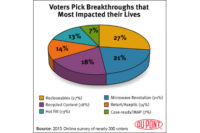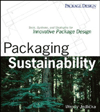Industrial Physics survey reveals top packaging innovations for the food sector

(Courtesy of Industrial Physics)
Industrial Physics’ latest research reveals that professionals in the food packaging industry are addressing demands for greater sustainability and consumer preference with innovative approaches to material choice and the processes involved in production.
The leading packaging, product, and material test and inspection provider conducted a worldwide survey of packaging professionals operating across industries including food and beverage. It was uncovered that the biggest drivers of packaging innovation for those in the food and beverage industries were:
- Ensuring quality of the packaging produced (69%)
- Ensuring quality/safety of the product contained within the package (63%)
- Ease of consumer use (56%)
- Supporting sustainability initiatives (50%)
Toby Lane, Product and Applications Manager at Industrial Physics, commented: “Sustainability continues to drive material developments including plastic eradication from brands across the world. However, we must look at the broader picture in terms of material transportation weight, production energy, testing capability, food safety approval, and other related challenges.”
Packaging professionals operating in the food and beverage sectors shared that although the cost of materials is proving a challenge for well over half of respondents (60%), investment in new material development is still proving popular. Reducing the use of plastic remains high on the agenda (43%) for investment, with biodegradable material (58%) and organic material (51%) cited as those with the most potential when it comes to exploring new packaging media.
Lane continues: “Material use debates often end with the question, ‘Can the material ensure the quality and safety required?’ For example, plastic is currently used for food storage because it is highly effective at sealing food while offering a tough, lightweight barrier with various sealing options. Therefore, if manufacturers select a less effective material to support sustainability or cost objectives, they risk triggering negative impacts such as increased food waste. This would be in direct contrast to the wider objectives uncovered in the research around waste reduction.”
The research also uncovered that packaging professionals in the food and beverage sectors are investing in recyclability (60%) and reducing waste (59%).
The report explores how over a third (37%) of food and beverage packaging professionals are exploring manufacturing processes such as lightweighting to support waste reduction throughout the supply chain. Lightweighting reduces the overall amount of material that is used to create metal packaging, while still maintaining the level of durability and performance required to protect the can’s contents. Today, cans can be produced with a wall thickness of 0.097 mm – as thin as a human hair, and by using less material in the manufacturing process, professionals can benefit from a reduction in the cost of production and ensure a more efficient use of the raw materials required.
“For food can makers, lightweighting not only facilitates a reduction in the cost of production and the materials wasted, but also allows the transport of a higher volume of cans with the same fuel usage. However, professionals must consider factors including retention of the can’s durability and ensuring that material reduction doesn’t compromise quality. Throughout the lightweighting process, cans must still adhere to stringent regulations, including food-grade coatings, seam closures and tamper-evident features,” adds Lane.
On experiences of testing, although overall packaging decision-makers are significantly in favor (96%) of new developments, professionals in the food and beverage sector are already raising challenges from material and process development. The research revealed that manufacturers are struggling to test new types of packaging, due to:
- The high cost of expertise required (63%)
- Limited testing facilities (50%)
- A lack of in-house expertise (44%)
Lane concluded: “Despite perceptions, the testing equipment and methods are still as applicable today. There are instances, for example, in the case of recycled polymers where materials will behave differently and a new bank of data will need to be built. However, industry collaboration can prove valuable to gather a wider sample more quickly. Also, the equipment available today is often so automated that professionals do not need to have a highly specialized knowledge base to conduct the testing required.”
To learn more about how packaging innovation goals are impacting the packaging landscape, download Industrial Physics’ free report here.
Looking for a reprint of this article?
From high-res PDFs to custom plaques, order your copy today!








